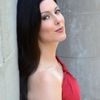I am on a flight right now from Aspen to Denver after an inspiring week sharing music and ideas, and the gentleman in the seat next to me is chain-smoking. I mean, fiendishly chain-smoking cigarette after cigarette. The baby in the seat in front of him is coughing and the flight attendant is exasperated. Smoke creates a filmy cloud cover throughout the cabin, but there is nothing we can do. The memory of our week in the pristine Rocky Mountain air grows fainter by the moment.
Or not.
Modern air travel may not be all sweetness and light, but I will say that it's nice that the gent to my left can no longer Marlboro-man it in my face. In the late 1990's, citizen advocacy combined with medical metrics to turn that (air)ship. Although it has been only 15 years since in-flight smoking was banned, the very idea of it now is so distant as to seem absurd, a Mad-Men-era relic redolent of Burma-Shave and our benighted youth.
Someone asked me recently what things I feel we accept today as a society that will be inconceivable for our next generation -- what "no smoking onboard" no-brainers will make up our more evolved America circa 2030. My list was not short: marriage equality, sustainable environmental solutions, quality educational resources for all, widely available "real food" nutrition options that are as easily grabbed as the preservative-rich options currently on my local bodega shelf. And Prescription Mozart.
Prescription Mozart is my shorthand for the leveraging of art's transformative power in the service of healing. It is a vision in which artistic expression -- collaborative, open-sourced and radically welcoming -- is once again positioned as a central component of human wholeness and societal harmony (pun intended).
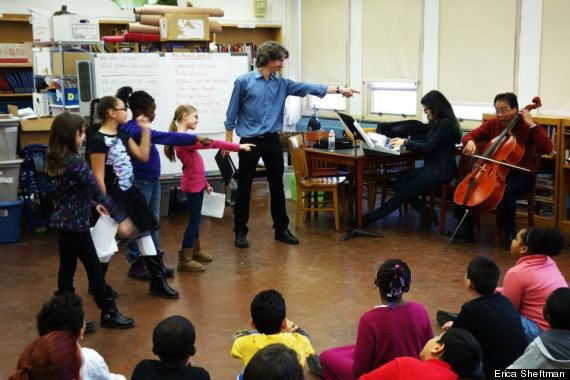
Tag - you're it! Damian Woetzel, Cristina Pato, Yo-Yo Ma and young friends share a spirited moment at Waterside Children's Studio School in Rockaway Park, NY (photo by Erica Sheftman).
I say "once again" because, historically, we haven't always peeled the arts out of the STEM equation (STEM = science, technology, engineering, math) as we do now, in some misguided attempt at pedagogical rigor. Art and science once commingled naturally in the classroom and beyond; STEM was, in Yo-Yo Ma's perfect phrase, STEAM. From the Renaissance through the nineteenth century, the arts and sciences were complementary parts of a (w)holistic approach to life, itself rooted in ancient Greek ideals. The arts were an integral and integrated part of learning, growing, connecting and healing. Take two arias and call me in the morning.
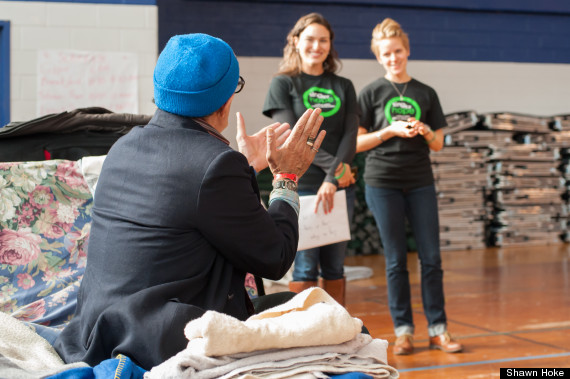
Sing for Hope Coordinator Stephanie Martinez and Volunteer Artist Katie Zaffrann share music at a Hurricane Sandy relief site in Brooklyn (photo by Shawn Hoke).
In my particular case, the arts -- music, specifically -- saved my life. Growing up in Texas in the 1980's with rock-solid public school music programs, my awkward, bespectacled 13-year-old self found my bliss and my solace in music-making. A couple of Juilliard degrees and a gazillion voice lessons later, I am lucky enough to get to sing for a living; music is still my daily refuge and the best straight shot to the soul that I know.
In light of my experience, I often wonder how, on a broader scale, we can justify not offering this source of human connection to the most vulnerable among us. Knowing art's particular spiritual alchemy -- its ability to expand minds, provide comfort and connect us -- how can we not work to bring it to every child, to our aged and aging, to our trauma-scarred, to our recovering?
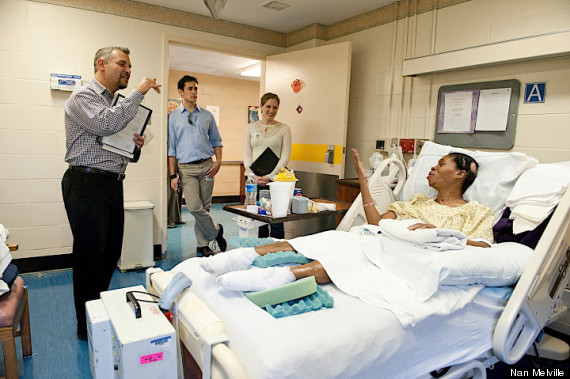
Sing for Hope Volunteer Artist Paul Fraccalvieri shares a duet with a patient at Coler Goldwater Hospital on Roosevelt Island, NYC's largest welfare hospital, as fellow Volunteer Artists Chris Herbert and Amy Justman listen in (photo by Nan Melville).
- There is now enough data about the efficacy of integrating the arts into medical/educational/rehabilitative facilities that if this were a traditional medicine, it would be malpractice not to prescribe it. To take this away from our most vulnerable citizens is, at best, cognitively dissonant; at worst, it's unethical. It just doesn't make sense.
- This is rigorous work. In Anna Deavere Smith's words, "A lot of times we think art is about congratulations, but we rehearse things for the opportunity to correct. And that area, the area of correction, is where the education begins." Per the examples of Yo-Yo Ma, Charles "Lil Buck" Reilly, Arthur Bloom, Damian Woetzel, Cristina Pato, Renée Fleming and Annie Lennox, to name just a few fellow travelers, "citizen artistry" demands fierce passion, technique and focus.
- So many of us are doing this. In addition to the 1,500+ roster artists of Sing for Hope (the NYC-based "arts peace corps" co-founded by myself and fellow soprano Monica Yunus), there are countless great individuals and organizations sharing this path: Tracy Straus' Celebrate The Beat, Arthur Bloom's Musicorps, Kiff Gallagher's Musician Corps, Chris Marianetti and Jeremy Thal's Found Sound Nation, Dan Cohen's Music & Memory, Jamin Gilbert's Project Rhythm, Sharyn Pirtle's Young at Arts and Mary-Mitchell Campbell's ASTEP; ensembles including Toomai Quintet and DeCoda; conductors including Mei-Ann Chen, Robert Spano, Scott Speck, Gerald Steichen, Michael Stern, and Alastair Willis; dancer-educators including Heather Watts and Jody Arnhold; and leading arts institutions including Carnegie Hall's Weill Music Institute and Lincoln Center Institute. This is a growth industry. Artist citizens are everywhere, powered by the innate desire to connect that underpins all art-making.
- Last week in Aspen, lifting my voice with Yo-Yo's sublimely singing cello, Arthur's gentle piano chords and the focused sweetness of Tim's tenor, I felt in my very bones once again the ever-familiar, soul-deep connection that it is to make art. And I felt once again that everyone deserves this.
- Who will emerge as the game-changing venture philanthropists who help bring this programming to scale on a national level? And what public/private partnerships will evolve? Infrastructure to sustain these programs will be significant, but the return on investment (civic engagement, economic impact, audience development, creativity ignited, lives transformed) will be far more significant. It is a worthy expense, and the time to spend is now.
- A key element over the next decade, as these programs continue to evolve, will be to ensure that we are not operating in silos and replicating efforts when we could be working together instead. How do we consolidate programs into larger initiatives geared toward specific, measurable goals? How do we share ideas and institutionalize best practices without losing the best aspects of our grassroots origins?
- How do we best show our efficacy? More to the point, how do the metrics of joy and well-being actually function? To demonstrate a healthy return on investment and ensure that funding flows to programs with most evidence of effectiveness, we need stats. Ensuring that these are objectively measured and clearly shown will be an art in itself.
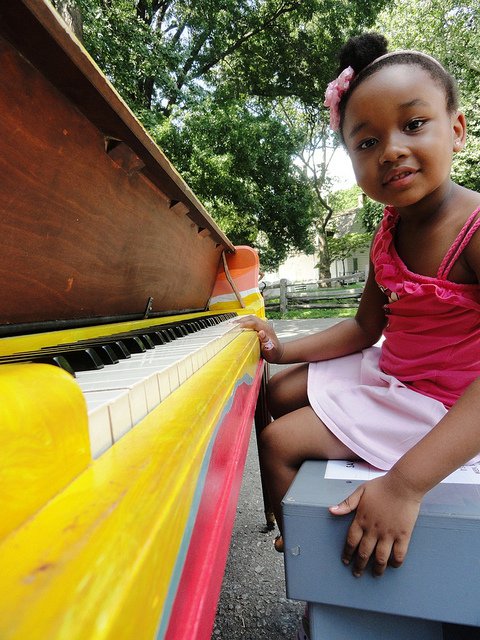
A young musician and her local Sing for Hope Piano in the Bronx, NY (photo by Marc Duran).
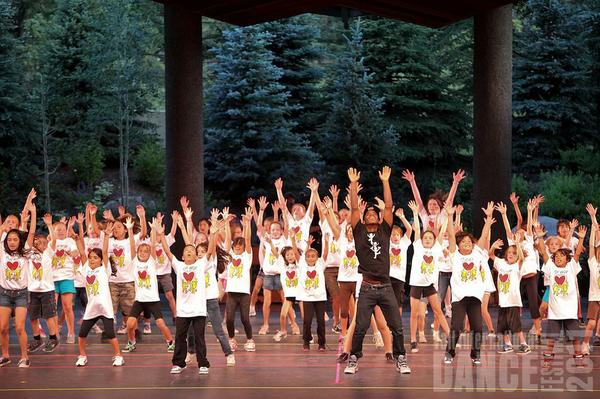
Reaching for the stars with Charles "Lil Buck" Reilly and students at the Vail International Dance Festival (photo by Erin Baiano).
So, clearly, my real neighbor on my recent Aspen-Denver flight was not my fictional conceit of Mr. Smokepuff. Rather, he was Derek Thompson, a charismatic 20-something senior editor of The Atlantic Magazine. During our brief trip, I congratulated him on his great panel moderating, and he credited his arts background (his theater training, in particular) for his ease in the format. Collaborating, improvising, listening, responding, imagining and innovating are second nature to him. His success is informed by skills incubated in the arts programs of his youth -- what Damian Woetzel calls "artistic habits of mind."
As a country, we have shown ourselves to be capable of such smart, vast, beautiful change, from Lincoln to King, Jr. to Steinem and beyond. We are not afraid to play an active part in our ongoing American evolution. Working together, we can offer radical welcome to the "art for all" banquet. Pianos aglow with color in inner-city alleyways. Children painting visions of hope on abandoned walls. Strads in shelters. Pirouettes in cafetoriums. $5 co-pays for string-quartets-in-residence dispensing bedside Bach (the latter in alignment with the Center for Medicare & Medicaid Services' mandate to reduce psychotropic meds in nursing homes by 30 percent in 2013). Together, we can do this.
And one day soon, the very idea of a hospital, a school, a shelter, a correctional institution or an elder care facility without art will have vanished like a puff of smoke.
